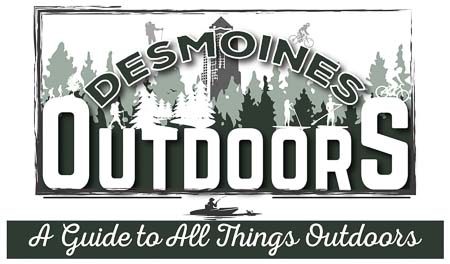This article contains affiliate links. In other words, if you click on an affiliate link and buy a product, this blog may receive compensation, at no cost to you. See our full disclosure here.
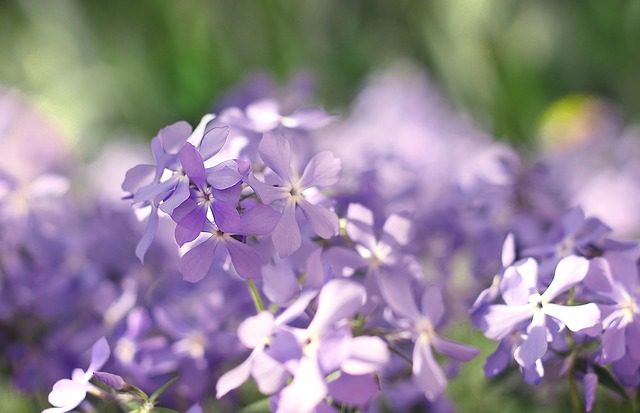
What could be more exciting than seeing the first spring wildflowers? After months of browns and grays, colorful wildflowers are a refreshing sight.
What are spring wildflowers?
Spring wildflowers are early bloomers, and you have to catch them at the right time to see them! They’re primarily short-lived (ephemeral) because they take the opportunity to capture sunlight before the leaves fill in and block it out.
They can grow and bloom early in the season since they store food in their stems underground. And they take advantage of moisture, soil nutrients, and sunlight while they get the chance. As a result, most complete their lifecycle within a few short weeks.
Common wildflowers
Here in the midwest, we’re all ready for some warm, fresh air. So what could be better than a hike through the woods to look for wildflowers?! To help you spot these spring beauties, below is a list of some common wildflowers you might find in the woods.
Hepatica

Hepatica flowers can be blue, pink, or white and emerge from the forest floor between March and June. Blossoms open on sunny days, and each flower has its own stem covered in tiny little hairs. Heart-shaped, three-lobed leaves appear after the blooms; foliage stays green for most of the year.
Dutchman’s breeches
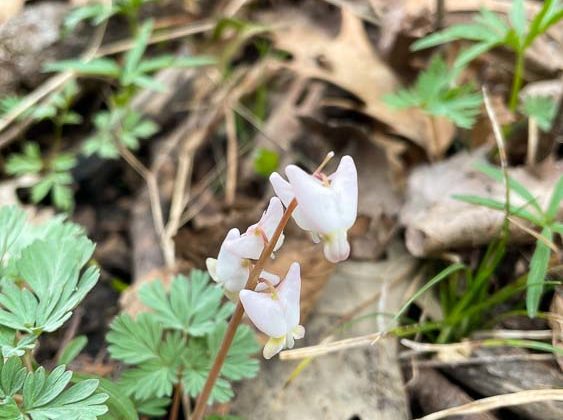
This unique wildflower has white and pink blooms that emerge in March and April. Flowers are distinguishable by their shape – they look like upside-down pants! Look for a row of blooms on leafless stems, with fern-like leaves below.
Bloodroot
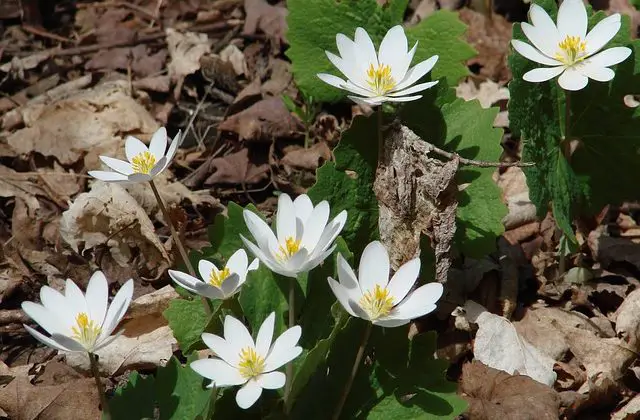
Bloodroot has beautiful yet short-lived blooms. And, if you’re lucky, you can spot them on sunny days between March and May. Each white flower has a yellow/orange center and grows on its own stem. Large round leaves wrap around the blooms before they rise above the leaves to open. The name, bloodroot, comes from the red liquid from its roots and leaves (which is toxic).
Nodding trillium
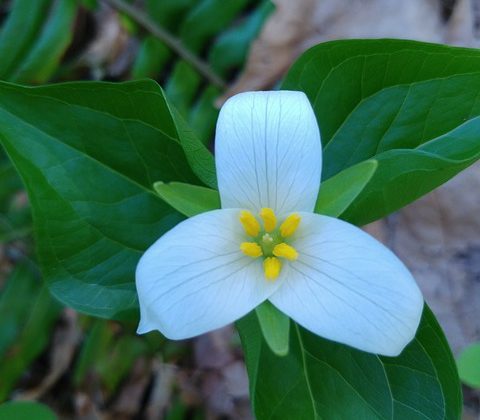
As the name implies, this “nodding” bloom often hangs from a single stem with three broad leaves. Each flower has three curved white petals with three green sepals beneath. You can see Nodding Trillium between April and May.
Wild Sweet William (Woodland phlox)
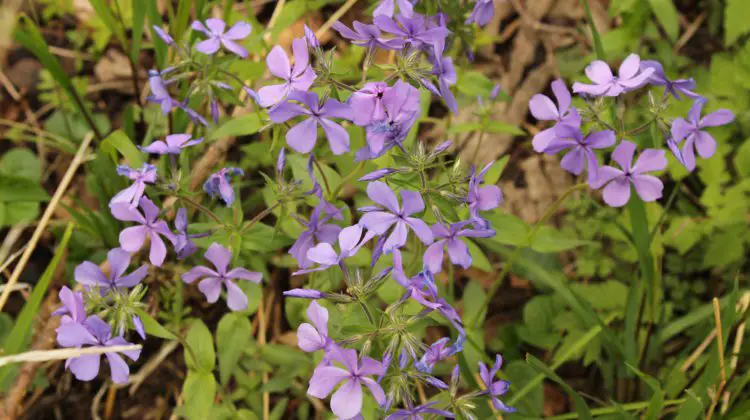
This common, easy-to-spot woodland wildflower appears in late April into May. You’ll see a cluster of small purple or blue flowers (technically lobes) at the top of a tall (~2′) stem. Long, narrow leaves grow below the flower clusters.
Jack in the Pulpit
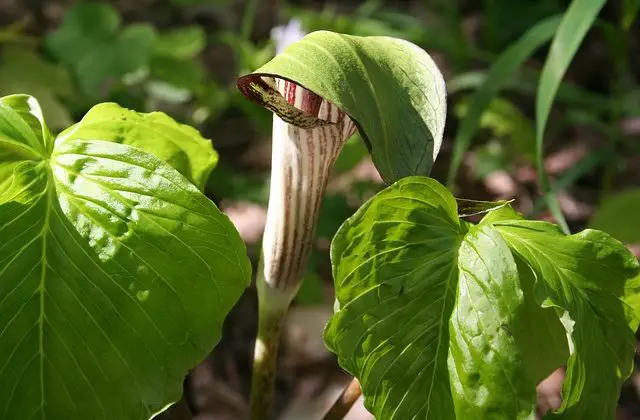
This one-of-a-kind flower is green with stripes that can be green, brown, or maroon. They appear in April and May. Since the bloom is often green, it’s not always easy to distinguish, but its unique shape is helpful. The flower has a cylindrical bloom with a “hood” and grows on a stem separate from the three-part leaves. Red berries appear late in the season.
Solomon’s Seal
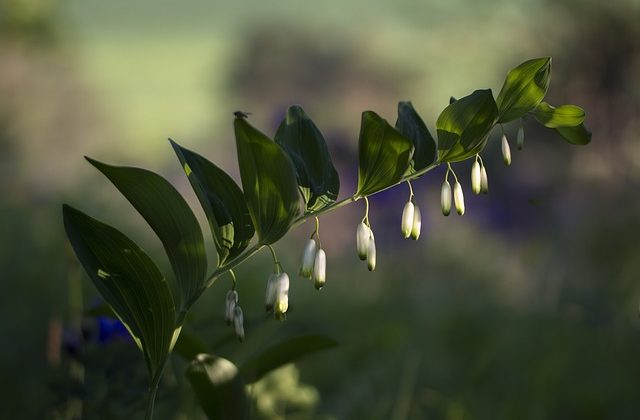
You can spot this interesting flower in May and June – and they’re difficult to spot unless you know what to look for. Stems are long and arched. And small flower blooms grow in pairs below the leaves, where the leaves attach to the stem. Look beneath the leaves for small pale green/white flowers shaped like bells.
Rue Anemone
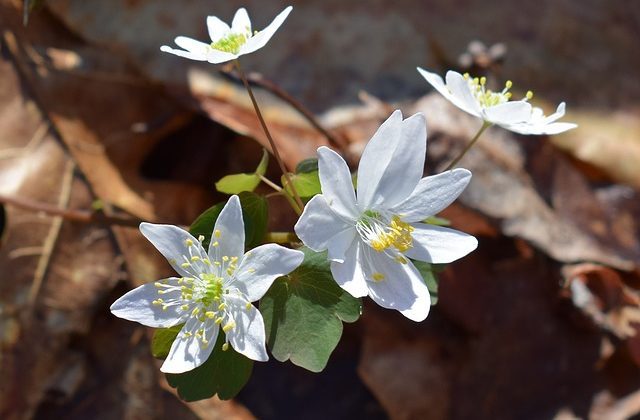
Spot these wildflowers in the midwest as early as March and late as June. Rue anemone’s first leaves are a purplish brown and later become green. Blossoms have up to ten petal-like sepals that are usually white or pink and have a yellow center. The flowers grow above the three-lobed leaflets.
Virginia Bluebells
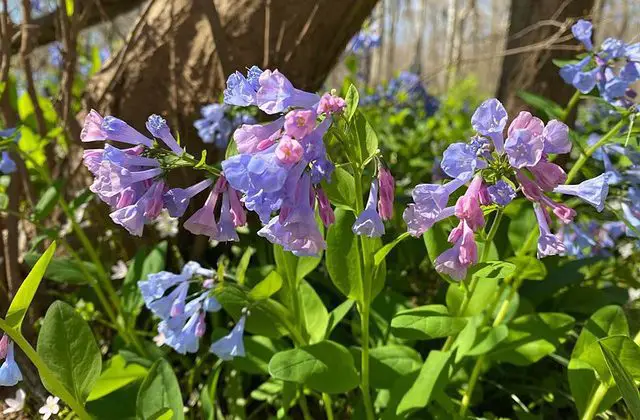
You can catch a glimpse of clusters of Virginia Bluebells in April – May. The first foliage is a deep purple, turning gray-green as flowers emerge. Their tubular, bell-shaped flowers start pink and turn purple when they open; they’re at the end of long arched stems. Did we mention their sweet fragrance?
Mayapple
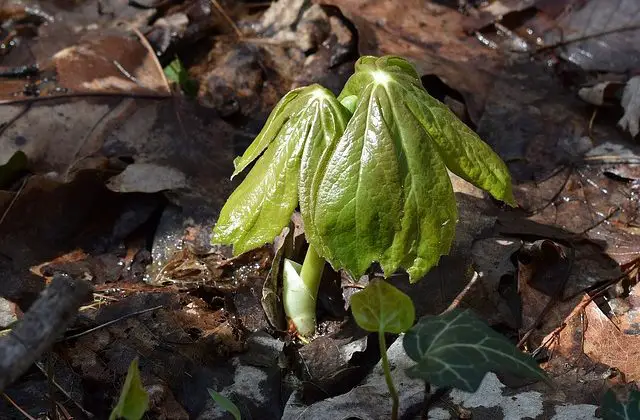
The Mayapple is also called a green umbrella plant for its large umbrella-like leaves. You’ll see them growing in clusters in woodlands between late April and May. Look beneath the umbrella-shaped leaves for the blossom where the stem branches. Flower blooms have up to nine white petals with a yellow center.
Violets
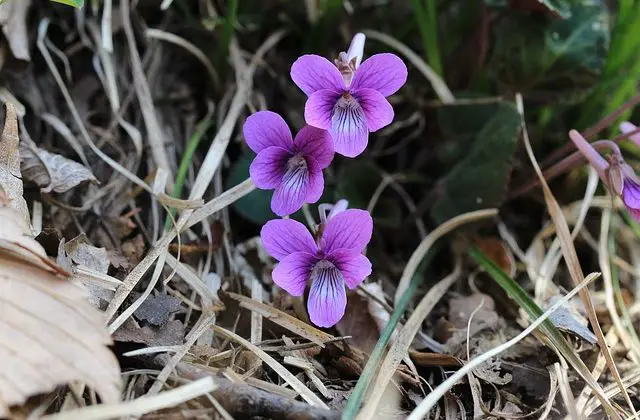
You can see several types of violets in the spring and the beginning of summer. Wild violets usually have small purple or blue blossoms (though some are white or yellow) and are common in lawns and woodlands. They tend to grow in low clumps, have heart-shaped leaves, and are edible.
Wild Geraniums
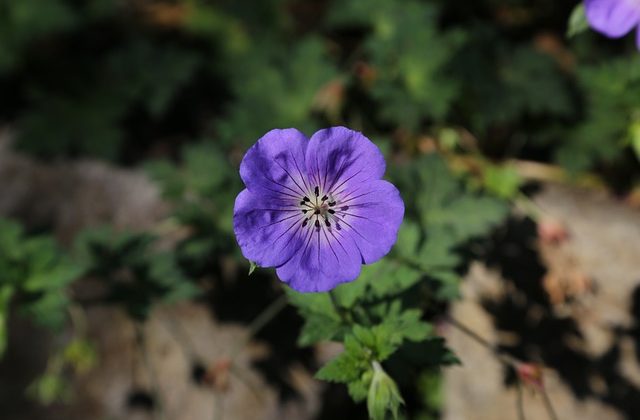
The first Wild Geranium flowers are in April or May in the midwest. Plants have three to five deeply lobed leaves with ridged edges. Pink or blue flowers have five rounded petals with a yellow center.
Columbine
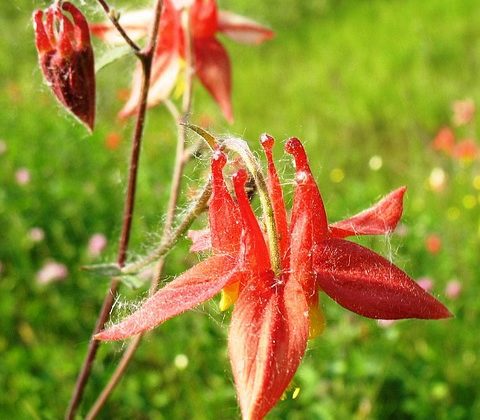
Red Columbine is a 2-foot tall native wildflower that blooms from April to June. It has beautiful one to two-inch red and yellow nodding bell-shaped blossoms with small, rounded, three-lobed leaves. The plant is self-seeding, and it’s common to see several flowers in a small space.
Recommended resources & books
- Iowa’s Spring Wildflowers | Iowa Association of Naturalists
- Iowa Woodland Wildflowers | Jasper County Conservation Board
- Lady Bird Johnson Wildflower Center
- Wildflowers of Iowa Woodlands
- Iowa Trees & Wildflowers: A Folding Pocket Guide to Familiar Plants
- Wildflowers of the Midwest: Your Way to Easily Identify Wildflowers
- A Peterson Field Guide To Wildflowers: Northeastern and North-central North America
- Wildflowers of the Midwest: A Field Guide to Over 600 Wildflowers in the Region
- For kids: Ultimate Explorer Field Guide: Wildflowers
Next:
- Spring in Des Moines: 10 Best Things to Do
- When To Start Seeds Indoors in Iowa: Get a Head Start on Spring
photo credit: Pixabay
